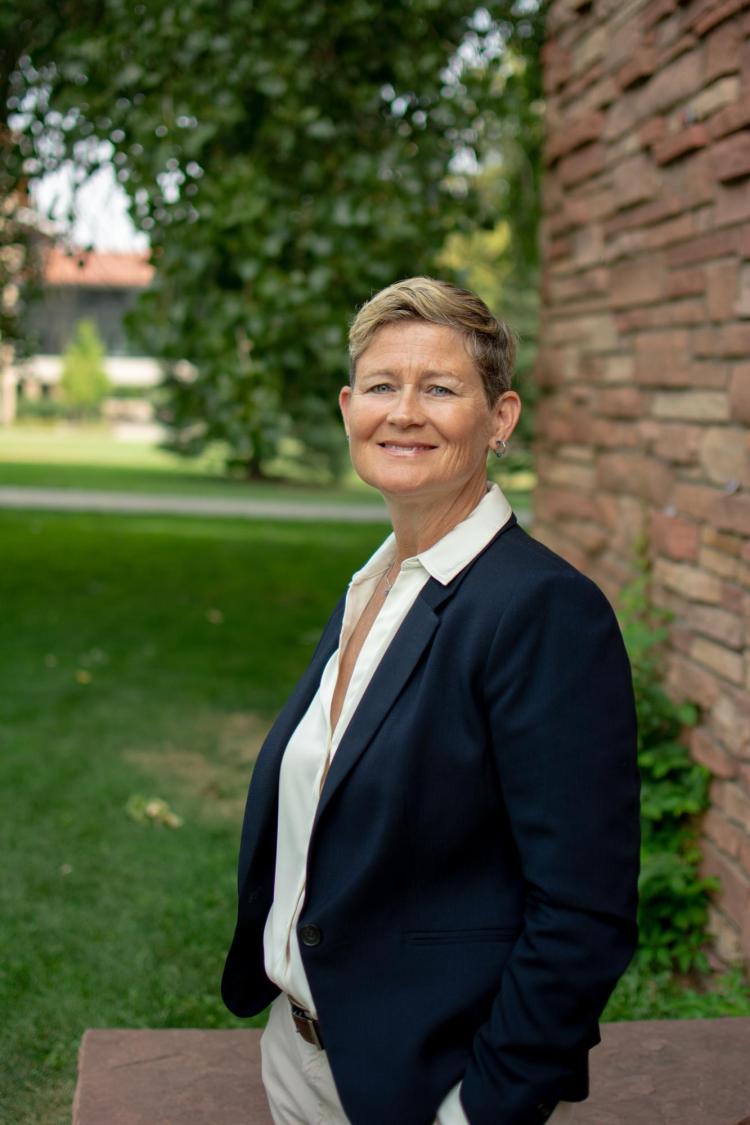Banner image: by Ted Eytan ��
In April, Florida Gov. Ron DeSantis signed into law the Parental Rights in Education bill, often dubbed by critics as the “Don’t Say Gay” bill. The move underscored��how the rights of LGBTQ+ students in K-12 schools have become one of the most prominent and divisive issues in midterm elections around the country.��
Elizabeth Meyer, an associate professor in the School of Education at CU Boulder, has spent decades examining the challenges facing LGBTQ+ students and teachers in the classroom. In March, she for the CU Boulder-based about how school policies can have real impacts on the health and education of young people—and what school districts across the United States can do to keep kids safe.��
To mark Pride Month, she sat down with CU Boulder Today to talk about bathrooms, school sports and why she believes kids should get the chance to read books about LGBTQ+ history in class.��

Elizabeth Meyer
You wrote in a that these sorts of laws aren’t new—that there have been regulations discriminating against LGBTQ+ students in K-12 schools for decades. What is new about the current political landscape?
What is new is the fact that we have increasing numbers of young people who are embracing identities under the LGBTQ+ umbrella, and who are finding community and affirmation, either locally or online. In the past five years, for example, the estimates of young people who identify as transgender or nonbinary have . They’re rallying, marching and demonstrating their existence.��
How can school policies help, or hurt, these students?
There’s a that has been doing surveys on these questions every two years since 1999. They ask things like: Do you have affirming adults in your school? Do you have curricula that include LGBTQ+ people in your school?
show, for example, that when LGBTQ+ students report having more affirming adults in their schools, they have better educational outcomes. If your state has strong nondiscrimination laws that include gender identity and sexual orientation, students feel safer and more protected. Just the presence of a gay-straight alliance—or what is now called a gender and sexuality alliance (GSA)—has a strong relationship with students��feeling safer and reporting fewer incidents of harassment at school.
At the same time, what impacts can discriminatory policies have?
Those sorts of policies can erode your willingness to attend school. The more students report experiencing anti-gay and anti-trans harassment, the more they report higher levels of absenteeism, higher dropout rates, and lower GPAs. We also see higher reported rates of negative health behaviors, such as drug and alcohol abuse and really dangerous self-harm, including attempted suicide.
You can’t talk about LGBTQ+��kids in school without also talking about bathrooms. In your report, you and your colleagues argue that transgender or nonbinary students need to have access to safe and appropriate bathrooms. Why?
We know that when students don't feel safe using the bathroom at school, they will dehydrate themselves. They will hold it until they get home and can end up developing urinary tract and kidney infections. We also know that young people at school if they don't have access to proper washroom facilities. All-gender, or “gender-neutral,” bathrooms are one inclusive answer to address these challenges.
You also make the point that transgender girls should be able to participate on girls’ sports teams, which has become a touch point in many places around the country. Why is that important?
In K-12 public schools, sports are primarily there to give students a space for physical fitness, school pride and belonging. Only a very small group of students take part in elite athletic competition and earn collegiate scholarships and prestigious awards.��
We want all . The and the all have trans-inclusive policies. I don't know why K-12 schools wouldn't also have inclusive policies when they're not at the same level of elite competition.
Do you think it’s important for school curricula to address the lives and contributions of LGBTQ+ people?
Yes. Seeing yourself in the curriculum really, really matters. There are stories of kindergarteners and first-graders who have never seen their family structure talked about in school. When they finally get to read a book like “,” which is about two male penguins raising a chick together, it becomes their favorite book. They say things like, “That family is like mine. I have two dads.” High school students who experience an LGBTQ-inclusive curriculum also .
What can babyֱ��app and other states do to keep transgender and nonbinary students safe, and learning, in school?
At the very minimum, we need to make sure we have statewide non-discrimination policies that are understood and implemented. For example, in babyֱ��app, we have the , which protects students against discrimination based on gender identity and sexual orientation. We have those statewide protections, but they're not necessarily fully understood or fully implemented.
In the end, do you think it’s a good thing that so many people are talking about issues facing transgender and nonbinary kids in schools?
I'm excited about it because, finally, the rights of these students are becoming part of the public discourse. Even though the tensions and the controversies are frustrating, it's a sign of advancement. Again, that’s because we have youth who are visible and comfortable in their identities, and they're refusing to accept the current conditions.


